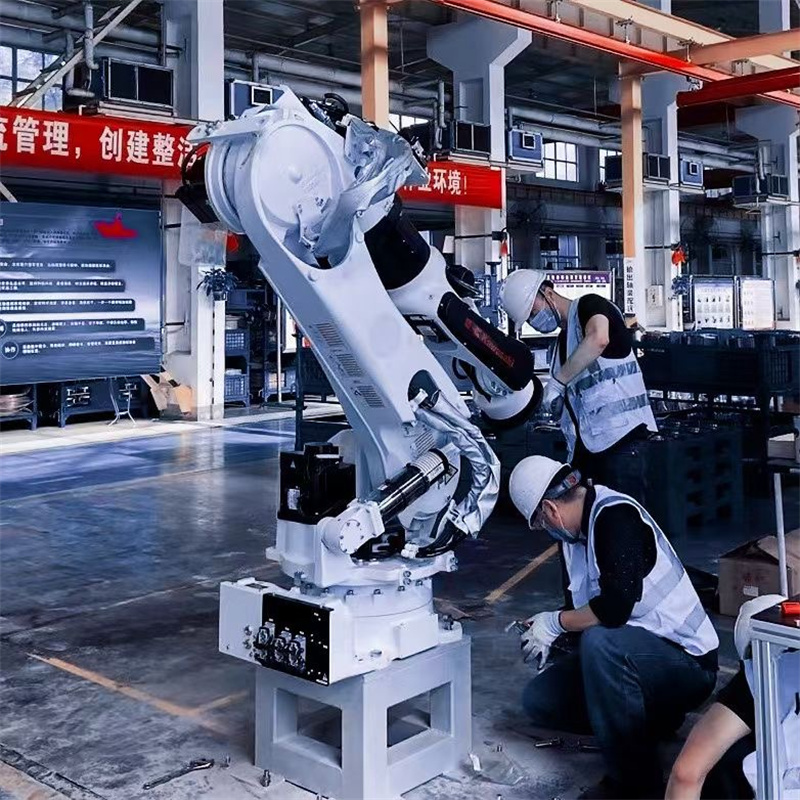News
Grasping the pulse of the industry and measuring industry trends
The top 10 trends in the intelligent robot industry in 2023 have enormous potential for future development!

Robots, as large and bulky machines occupying vast spaces in factories, have made great progress since their early days. Nowadays, robots are more versatile and adaptable than ever before. They are rapidly becoming an indispensable part of many business operations.

The business environment has undergone significant changes. Supply chain disruptions, labor shortages, and escalating geopolitical turmoil are prompting many companies to readjust their operational methods.
Robots and other forms of automation are becoming core tools for addressing these challenging situations. How will the situation change with the development of 2023? We cannot be certain.
But here are some predictions about which trends may become the dominant robotics industry in 2023
1. Data driven automation
We have entered the era of big data, and robot automation is no exception. Automation technology is increasingly data-driven, emphasizing the application of solutions based on real-world data.
According to some analysts, for example, one-third of European companies are now prioritizing data-driven automation.
One aspect of data-driven automation that you can see in practice is supply chain logistics, where robots are used to execute decisions based on real-time logistics data.
2. Using robots to enhance human abilities
Robotics technology is increasingly being combined with other technologies for application. Approximately 35% of organizations will combine physical robots with other technologies to enhance human capabilities and address labor shortages.
Companies are increasingly realizing that robots are not a substitute for human work, but a way to enhance what human employees can already do. With many industries facing worrying skill and labor shortages, robots are becoming a necessary way to fill the widening gap.
3. The use of collaborative robots will continue to rise
In the past decade, collaborative robots have become an important component of the robotics field. It is expected that by 2027, collaborative robots will account for 30% of the entire robot market.
Collaborative robots are designed to work safely with humans and are inherently easy to use. This makes them very suitable for those who have no prior experience in robotics technology and do not have enough space or resources to accommodate their needs
A company specializing in large industrial robots with additional safety fences.
The widespread adoption of collaborative robots has brought automation to more companies.
4. Autonomous mobile robots are about to arrive
Autonomous mobile robots seem to be entering more industries, especially in the logistics field.
We saw many autonomous mobile robots at this year's Automatica trade fair. This technology, which has been around for many years, has finally gained popularity. The company is currently adopting mobile robots to improve their logistics operational efficiency in warehouses and other industrial environments.
5. Shortage of skills may hinder automation
We have previously discussed how robots can help companies overcome skill shortages in their industry by taking over the less skilled parts of worker work. However, there is a skill shortage that robots cannot solve: a shortage of robot skills.
It is predicted that the lack of robotics technology will slow down the adoption of robot automation by some companies. This makes it even more important to choose robot solutions that can be deployed by almost anyone, regardless of their experience in robotics.
Logistics remains a "sweet spot industry"
The logistics industry experienced a significant increase in attention during the global pandemic in 2020, while global e-commerce was also on the rise.
Logistics remains the "best field" of robotics technology, as it provides many opportunities for automation and has the potential for increased use of robots.
In the coming years, we may see more growth in robot applications related to logistics. Robot palletizing remains one of the popular automation solutions.
7. Electronic assembly automation will grow
Another "best field" of robotics technology is electronic manufacturing, especially electronic assembly. Compared to human workers engaged in the same job, robots can assemble electronic parts more consistently. This can save the company time and money, while reducing errors caused by manual assembly of products.
Robot screwdrivers are an example of tasks that are now easier to perform with robots than ever before. This basic task can help accelerate the entire assembly process.
8. The automotive industry has lost the position of robots
For many years, the automotive industry has been a major user of robot automation. However, it has recently lost its advantage.
This transformation indicates how widespread robot automation has become. It marks a transition point where more robots will enter more industries in the future.
9. More intelligent and adaptable robots
Robots are becoming increasingly intelligent and adaptable. The new wave of robots can integrate real-time information into their operations. They are able to quickly respond to changes in the environment and change their operations.
With the rise of practical artificial intelligence algorithms, we can look forward to seeing more advanced and complex robots in the coming years.
10. Easy to use robots are key
With the rise of easy-to-use robot solutions (such as robot application kits), the threshold for entering the field of robot automation is decreasing.
Robots are now easier to use for any company, not just those with robot knowledge.
This trend towards intuitive robots seems likely to continue. In addition to application packages, we have also seen more robot as a service business models as companies aim to reduce friction related to deploying robots.
If you haven't used robots in your business yet, it's definitely time to get started!
Backtop

Scan and follow us